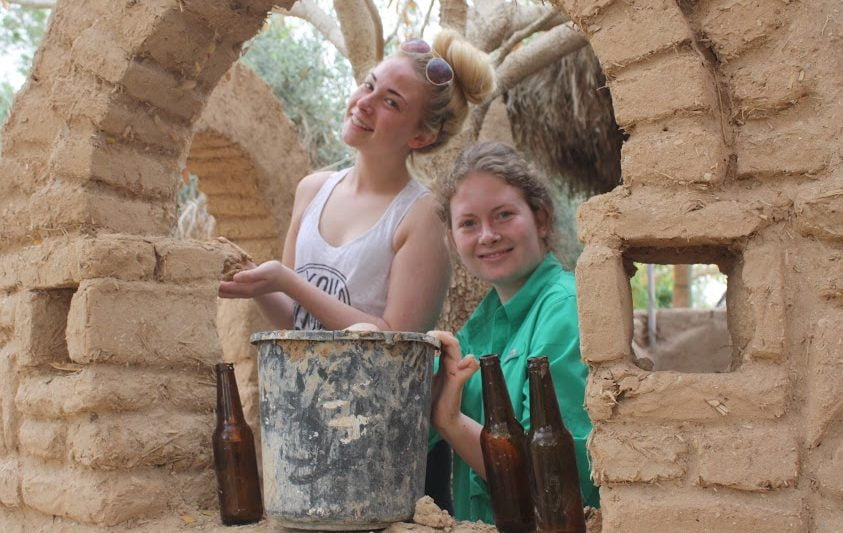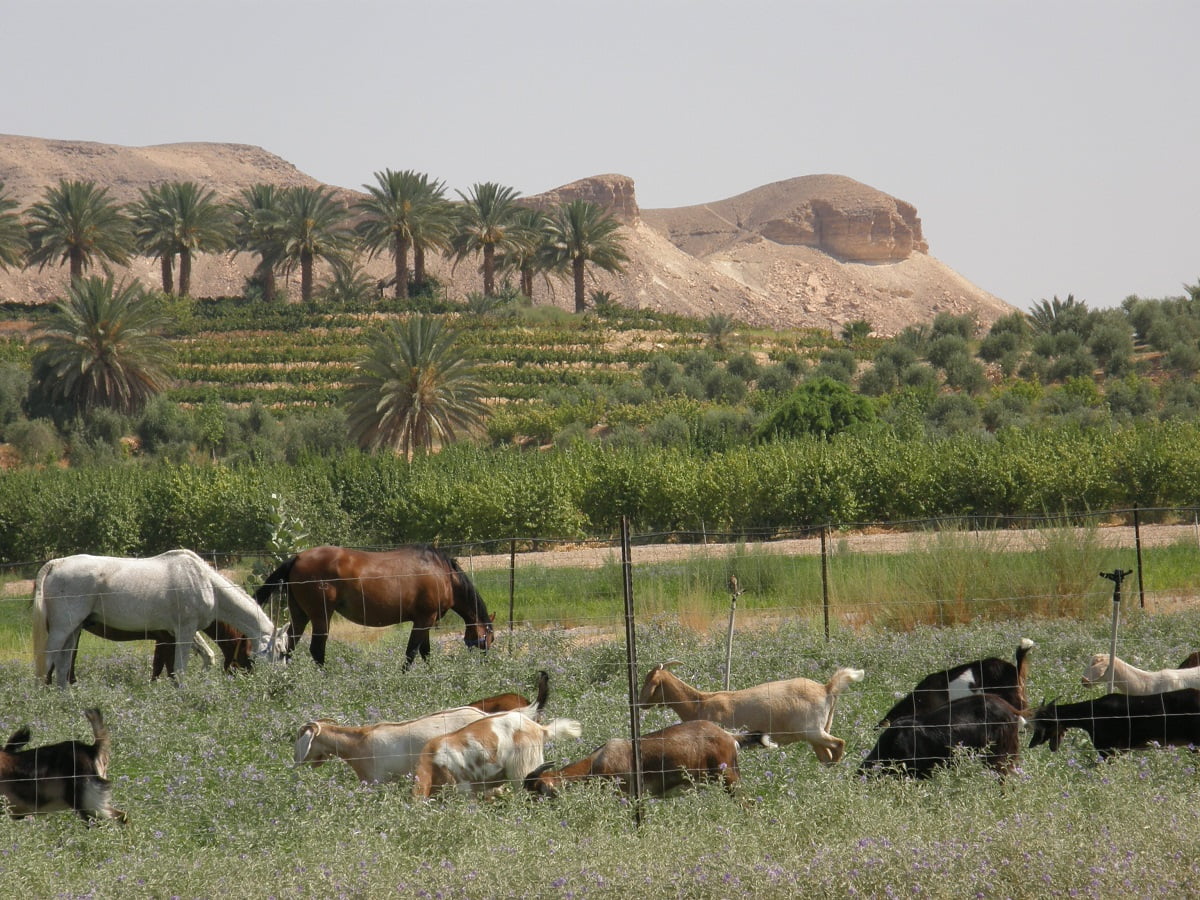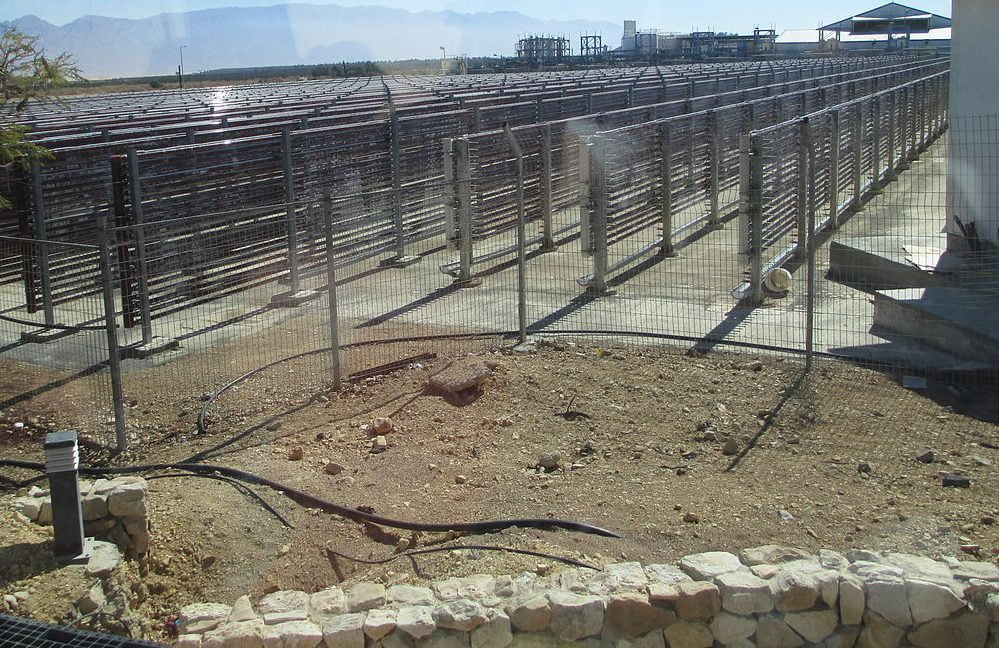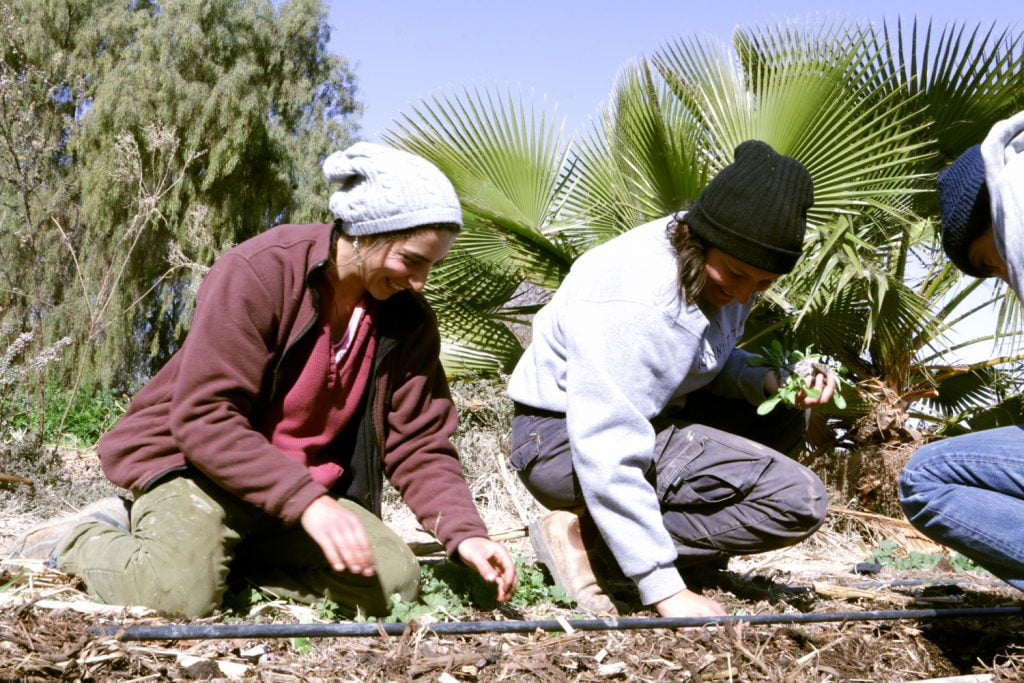The debate on climate change has come a long way since former US presidential candidate Al Gore’s world-famous film “An Inconvenient Truth” more than a decade ago. And while the issue has become a political lightning rod in the US, with President Donald Trump announcing this summer that the US would withdraw from the 2015 Paris Agreement to curb greenhouse gas emissions by 2020, at least 195 countries are signatories to the accord and said last week they are still committed to mitigate climate change, which scientists have warned poses an existential threat.
SEE ALSO: From Agriculture To High-Tech: Meet Five Kibbutzim That Became Global Powerhouses
In Israel, which has signed and ratified the Paris accord, and which produces 0.20 percent of global emissions, according to Climate Analytics, Kibbutzim (or collective communities) appear to be leading the charge on minimizing their global footprint, developing and enacting models of sustainability.
Israeli kibbutzim originated in the 20th century, prior to the creation of the State of Israel in 1948, when early Zionists dreamed of creating a society based on socialist principles such as communal property ownership and equality. Many of the communities thrived, despite harsh conditions, through innovative agricultural practices.
For decades now, kibbutzim have evolved from their socialist origins to adapt to modern society. While some have embraced capitalist principles, developing technologies and products that turn a tidy profit, many have remained connected to their agricultural roots by embracing sustainable living.
In doing so, they have developed innovative community designs and living methods to minimize their impact on the environment. And they want to spread the word.
Here are five Israeli ecological kibbutzim that are serving as models for sustainable living.
Kibbutz Samar
Located in the Arava Valley in southern Israel, just north of Eilat, Kibbutz Samar is home to roughly 50 families. Founded in 1976, it has over 40 years later largely maintained its original socialist ideals. The agricultural foundation is also apparent, with Samar’s organic date groves, the largest in Israel, and roughly 250 milk cows.
The kibbutz also produces Paspalum grass, increasingly grown without pesticides and fertilized with natural compost.
Samar is perhaps most famous for being the home of Bryan Medwed, an Arava energy pioneer, who created the Sunenergy Project which aimed to build solar power devices that would fulfill the kibbutz’s needs. The resulting prototype is still in use today and he is recognized as being one of the first in the region to see the potential of the area’s natural resources to develop renewable energy.
Kibbutz Lotan
Kibbutz Lotan was established in 1983 in the Negev desert in southern Israel. According to Mark Naveh from the Center for Creative Ecology in Lotan, it was initially founded “to take responsibility for our own actions as much as we could.”
Lotan stands out among the ecological kibbutzim for its emphasis on environmental education. The kibbutz is home to the Center for Creative Ecology which runs various programs based on sustainability values for people of all ages, including an Eco-Kef (Eco Fun) lab, a solar tea house, and organic gardens. The center features the Green Apprenticeship, a four-week program which entails a Sustainable Development and Permaculture Design Certification that involves construction and organic farming. There are also one-week programs on natural building, sustainable community and local food production.

Volunteers engage in natural construction at Kibbutz Lotan. Courtesy Kibbutz Lotan Center for Creative Ecology
Kibbutz Lotan also practices what it preaches. The community grows organic food without pesticides or insecticides using a “biodiverse market-garden model.” Naveh tells NoCamels that it’s “basically growing different species together” which is healthier for the environment. Lotan also keeps its produce local, and doesn’t export beyond the immediate surrounding communities, to optimize sustainability.
The community also composts and recycles to limit waste.
Sign up for our free weekly newsletter
SubscribeKibbutz Ein Shemer
Founded in 1927, Kibbutz Ein Shemer is located in the Shomron region in northern Israel, a notoriously green region filled with citrus groves and fertile land, and is currently home to about 600 people.
Like all kibbutzim, Ein Shemer was founded on agricultural projects including orchards, orange groves, sheep farming and field crops. To diversify, the kibbutz established separate rubber and plastics factories in 1968 and 1976 respectively and weathered difficult times during the 1980s when the country experienced an economic downturn.
Like Kibbutz Lotan, Ein Shemer stresses education through its ecological greenhouse with after-school programs, workshops, and research projects. The greenhouse includes fish breeding systems, plant growth computer systems, and other technology used for projects and experiments. Both Arab and Jewish children are welcome to partake in the greenhouse’s programs.
Kibbutz Ketura
Like Kibbutz Samar, Kibbutz Ketura is located north of Eilat in the Arava region and is home to about 400 members, two-thirds of which are immigrants from North America, Europe, Latin America, Australia and New Zealand. The kibbutz was founded in November 1973, just after the Yom Kippur War and still operates under the principle that “money is collectively earned and spent.”
In 2007, members of Kibbutz Ketura founded Arava Power, a company that develops photovoltaic fields in Israel. In 2011, the company launched Israel’s first commercial solar field called Ketura Sun. Later, in 2013, the company started to develop a national infrastructure project by building Ketura Solar to supply 20MW of power from solar energy.
Similarly, Ketura partnered with JCA, a British company to found Algatechnologies, a biotechnology company that commercially cultivates microalgae, in 1998. In 2003, the company created a pilot plant on the kibbutz and some members of the kibbutz continue to find employment through the company.
Ketura is also home to the renown Arava Institute for Environmental Studies, which offers a number of programs on environmental and sustainability research as well as renewable energy, water conservation, sustainable agriculture and sustainable development. It has partnerships with Ben-Gurion University of the Negev and other research centers.
Kibbutz Neot Semadar
Kibbutz Neot Semadar too is located in Israel’s Negev Desert, north of Eilat. It was founded in 1989 by a group of people “of all ages, all careers, all kinds of backgrounds, the common thing about these people was the desire to live together, work together in constant harmony and learn what is cooperation,” Anat Shaul, the kibbutz’s head of PR for tours, tells NoCamels.
The kibbutz has a spice garden and various vineyards and orchards which yield products such as olive oils, fruits, dates, and organic wine. It also has a fruit processing plant that uses the fresh, organically-produced fruit to create jams, juices, and dried fruits, and roughly 250 goats that yield dairy products.
“Today, everything we produce or consume is organic,” says Shaul, adding that the products are sold once a week at an organic shuk (market) nearby. Kibbutz Neot Semadar also recycles and composts any waste.
In addition to its sustainable food system, the kibbutz specializes in desert construction, building structures in a manner best suited to the climate. The buildings feature thick, adobe walls insulated with mud-based bricks, according to Shaul, and use passive air cooling towers to minimize energy consumption.
SEE ALSO: Aiming High: Israeli Architects Build Eco-Home From Cannabis On Mount Carmel
The kibbutz also has two photovoltaic plants, one large and one small, for energy production and an extensive sewage program from constructed wetlands where water plants and gravel purify the water naturally.
Related posts

Rehabilitation Nation: Israeli Innovation On Road To Healing

Israeli High-Tech Sector 'Still Good' Despite Year Of War









Facebook comments